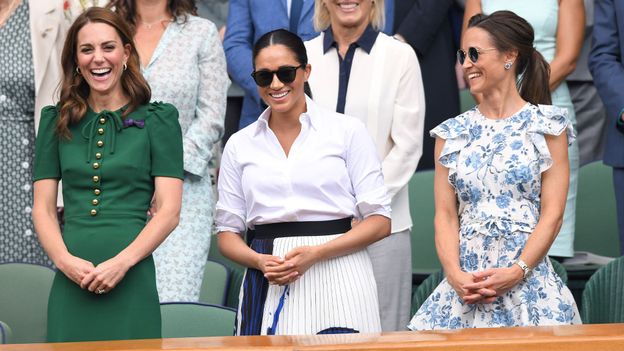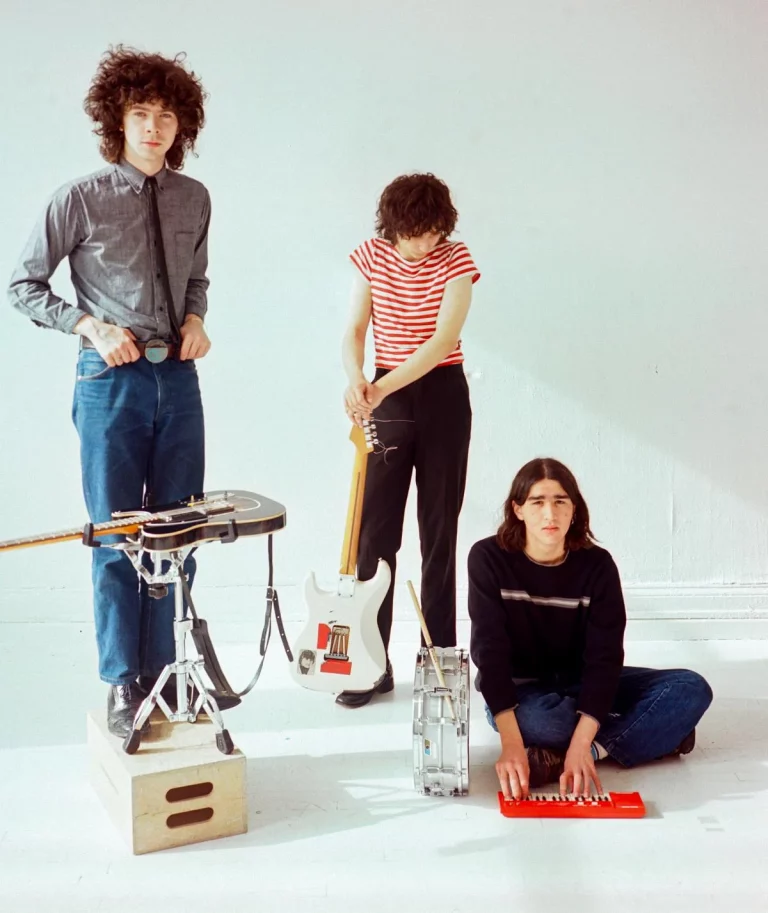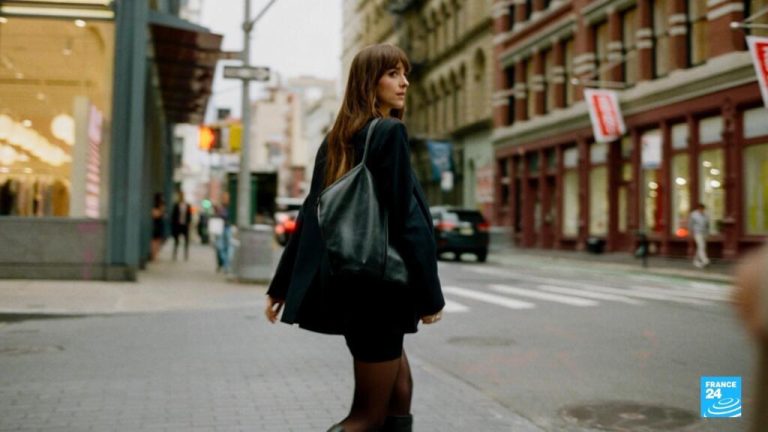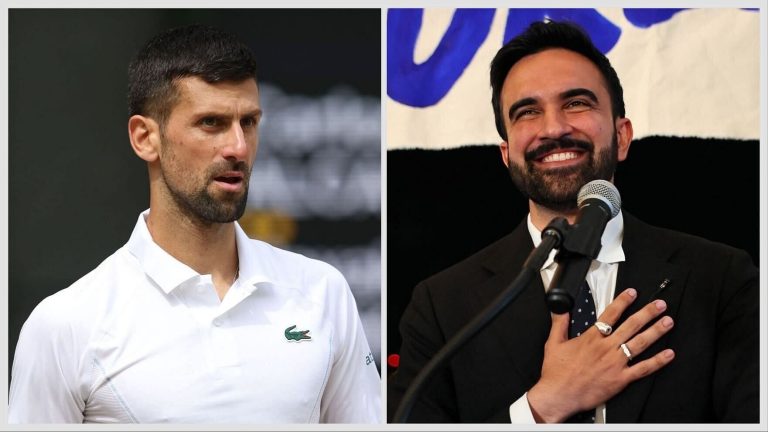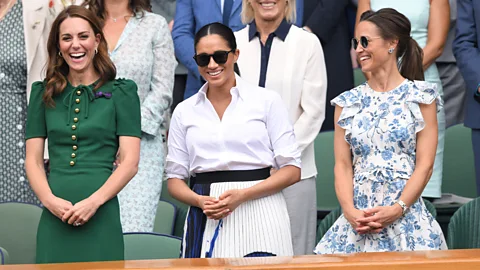 Getty Images
Getty ImagesThe Championships have begun, and the quintessentially British tennis tournament has some very particular codes for attendees to follow. How are spectators expected to behave, and what should they – or should they definitely not – wear?
Afternoon tea, a stiff upper lip and Wimbledon – all so deeply “British” that they’ve become part of the nation’s international brand; the things that seem to make Britain, Britain, and tempt tourists from far and wide to observe them for themselves.
The optics of the annual tennis tournament in south London – the strawberries and cream, the Pimm’s, the ball girls and boys – are all intrinsic to this frightfully British institution. It is a marker of “The Season”, alongside the likes of the Chelsea Flower Show, Henley and Ascot, as well, of course, as being a place where balls are expertly hit by rackets. Equally intrinsic to the Britishness of the tournament are its less tangible cornerstones. Its rules and the etiquette are paramount, both in terms of behaviour and dress – in other words, what to wear, and what falls a little long of the baseline.
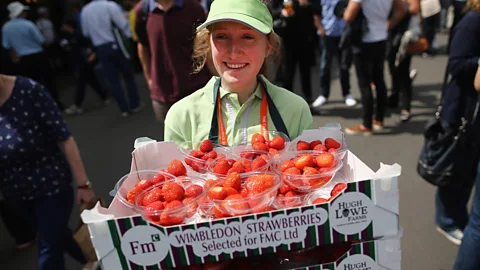 Getty Images
Getty ImagesSo what does the etiquette of Wimbledon entail? For starters, according to the self-styled queen of etiquette, Laura Windsor – who advised on the TV series Bridgerton – don’t call it Wimbledon. “Really, when one refers to Wimbledon, one should say the Championships, as they are the oldest and most prestigious lawn tennis championships in the world.” Another suitable moniker is simply “the tennis”.
Attendees should, she tells the BBC, be behaving “with modesty… That’s our Britishness, isn’t it? We’re prim and proper”. What does this look like? For a start, avoiding many of the kinds of behaviours that are the norm at other sporting events, and instead behaving in ways arguably more in line with theatre-going, keeping things largely hushed, and not cracking out a selfie-stick – they were banned from the tournament in 2015. Although for British etiquette coach and author of Just Good Manners, William Hanson, “anyone who is still using a selfie-stick in 2025 should be monitored closely, anyway”.
Best behaviour
According to Hanson, “while people love the social side of Wimbledon, it is worth remembering that it is a seated, sporting event that comes with its own set of court-side rules.” He goes on: “Be punctual, and get in your seat in good time… respect the fact that you can only come and go during a changeover.” Of course, phones should be on silent. But he also extends his guidance to how best to rally around the players, and officials, on court: “Be sporting with your support, and never cheer errors or mistakes. Respect the silence during play, and save clapping and cheering for between points. Avoid disturbing the players by calling out, and remember the umpire’s decision is final – never heckle or question line calls.”
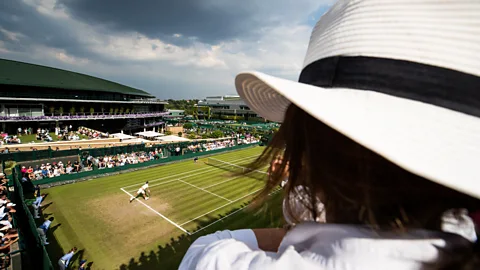 Getty Images
Getty ImagesBeyond that, “keep your yourself to yourself,” he says. “Be aware of those sitting around you, and keep within the space of your seat – even if it is limited, try not to spill over into someone else’s personal space accidentally.” And, in case you were thinking about sneaking in a tuna melt, “avoid disturbing the peace by rustling wrappers or eating messy or smelly food”.
Most obviously, though, the rules are embodied in what to wear – “the best way to show good behaviour is by dressing appropriately,” says Windsor. While Wimbledon has no strict dress code, smart dress is encouraged, especially on the show courts. Plus certain items, such as ripped jeans, dirty trainers and anything with a political statement, are banned. “Be comfortable and appropriate for the weather,” says Hanson, “but avoid anything that is overly casual or better worn at the beach”.
Unofficial dress code
Unofficially, however, Wimbledon has developed its own set of style rules. Take for proof of these unspoken but still-tangible “rules” the criticism that Meghan, Duchess of Sussex faced from some corners for wearing jeans, alongside a hat and blazer, to watch her friend Serena Williams play in 2019.
For Daniel-Yaw Miller, sports and fashion journalist and founder of the SportsVerse newsletter, “when you think about Wimbledon dressing, everyone has the same kind of thing in mind – either white or beige. You wear a blazer, you can wear a hat.” Guests often favour floral frocks, polka dots and tailoring. By osmosis, a dress code seems to have been landed upon. For Windsor, dressing appropriately means “something that is demure and sophisticated,” such as crisp linen and tailored pieces.
While Hanson points out that “wide-brimmed hats are best avoided as they can get in the way of those sitting behind you,” Panama hats have become something of an official Wimbledon uniform, popular in the audience from the start of the 20th Century.
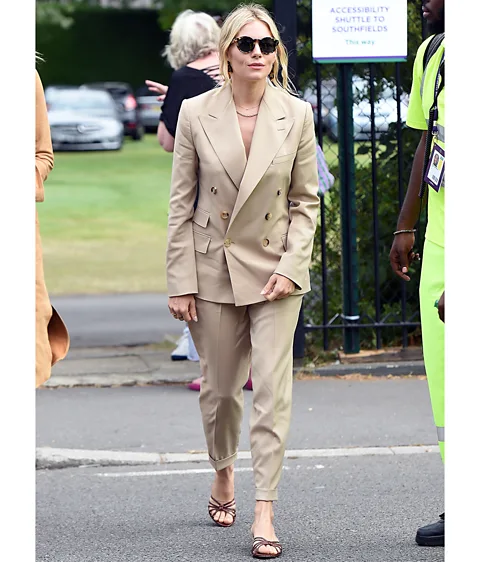 Getty Images
Getty ImagesOver the years, a number of high-profile celebrities have offered up glowing examples of how to ace it sartorially in the stands of Centre Court. Zendaya, patron saint of “tenniscore“, schooled Wimbledon-goers last year when she wore Ralph Lauren menswear-inspired looks – crisp white and old school tweed suit jackets, blue-and-white-striped shirts and ties.
Other smashes include Meghan in neat pleats and white shirts, Keira Knightley in a dropped-waist Chanel dress, Tom Cruise, year-on-year, in natty suit after natty suit, Alexa Chung in Aran-knit cardigans and crisp cotton poplin skirts, and Pierce Brosnan in navy linen suits with neat pocket squares. Arguably, however, queen of SW19 dressing is Sienna Miller, thanks to her broderie anglaise dresses and easy-breezy linen suits, bright white Galvan jumpsuits and polka dots. Others have aced it despite not sticking to the script – see Grace Jones in a flight suit for a perfect example, or Idris Elba in a striking Super Eagles shirt.
Catherine, Princess of Wales, who is the royal patron of the All England Lawn Tennis Club, often wears green or purple, the official colours of the tournament since 1909. In recent years she’s attended in a plethora of shades of green, such as a forest green Dolce & Gabbana crepe midi-dress in 2019, and in 2021 an emerald green Emilia Wickstead number – the colour of the grass at the beginning of the tournament, if not the end. Last year, Kate wore a purple Safiyaa dress to present the trophies for the men’s singles.
Sense of tradition
The presence of royalty every year underlines the event’s sense of tradition, and tennis has long been associated with wealth, status and glamour. “Tennis was this social game, rather elite and glamorous,” says Elizabeth Wilson, author of Love Game: A History of Tennis, from Victorian Pastime to Global Phenomenon – its original setting was the country house. “It is, without doubt, a traditionally upper-class sport, and that essence still permeates through a lot of tennis,” says Miller. He likens it to cricket, or Ascot, “where you have to be so respectful, as an outsider coming in, of the rules”.
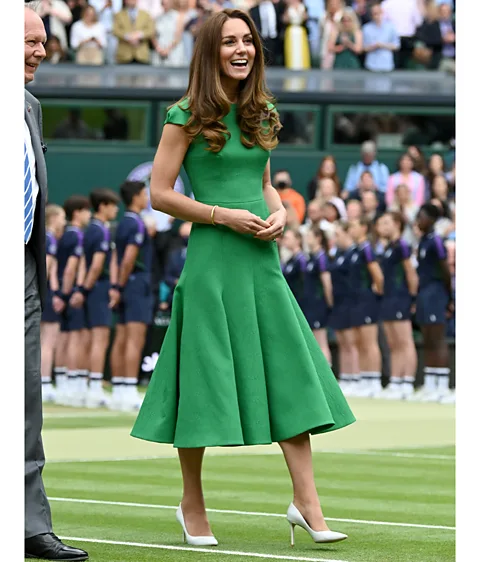 Getty Images
Getty ImagesEven among tennis tournaments, Wimbledon is extra-proper. “You look at other grand slams, [it] is the polar opposite,” Miller says, mentioning some examples: walk-out music, players dancing as they come out, Kiss Cam, hot dogs for sale and T-shirt guns.
It is, says Miller, “one of the last bastions of old-school British culture in the mainstream”. Its archaic quality is, for some, part of its charm and appeal. “I see Wimbledon as essentially like a museum. You go there for a fascinating day out, for an insight into what the past of British society looked like,” he says.
All this also has its downsides. “From a fan perspective, you’re really made to feel like you’re stepping into a space that is not yours,” says Miller. You need, to a certain extent, “to act like you’ve been there before”.
Shifting codes
Over the years, however, Wimbledon’s codes have been shifting. In lots of ways Wilson thinks “it’s more participatory 1751367242”. In the past, “people have described how the atmosphere was more like a cathedral, there was a rather holy atmosphere – whereas that’s very far from how it is today.”
Hanson agrees. “If we think of the Henman Hill/Murray Mound (and the rest), levels of patriotism and emotion, it is unlike public displays we would have seen in the past.”
Crowds do now whoop and shout, at least between points, and even partake in the occasional Mexican wave, which, according to Wilson, “nobody would have thought of doing in the 1950s”. When Miller went last year, he “could definitely feel that it was a bit more of a modern tennis experience”. He can feel it, he says, “loosening up, just the tiniest bit”.
 Getty Images
Getty ImagesDress-wise, also, attitudes are softening. Miller sees Idris Elba and David Beckham as shining examples of dressers who know how to be Wimbledon-appropriate without looking stuck in the past. “The look is more ‘fancy barbecue’ than ‘super formal event'”.
For Hanson, points of etiquette prevail. “Etiquette is all about how our actions and behaviours affect or impact other people. We need to be considerate and careful in how we behave to ensure that everyone has a great day watching tennis. Wimbledon thrives on its age-old rituals, and remains one of the key traditional British summer sporting events – hopefully, for this special fortnight, we can all remember our manners, on court and off.”
